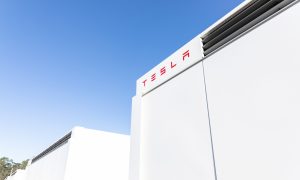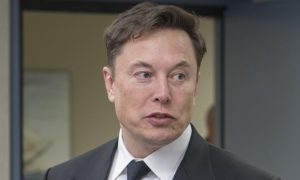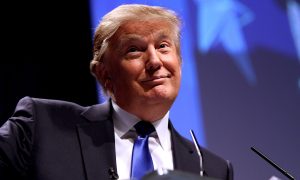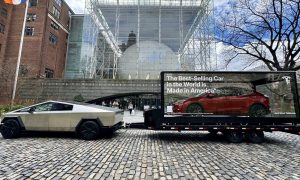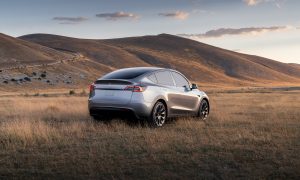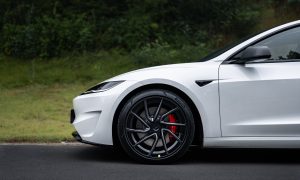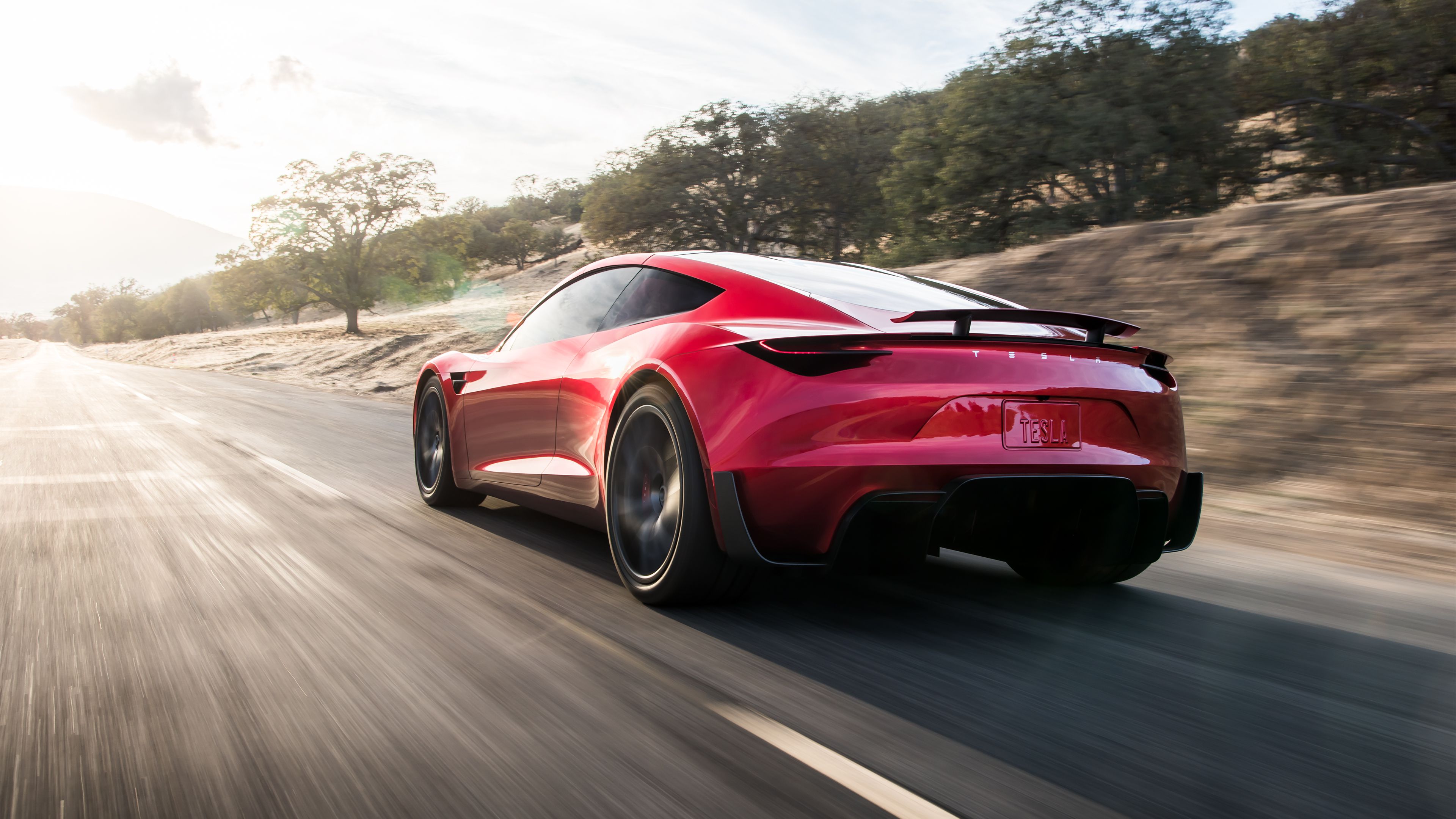

News
Tesla Roadster’s ‘SpaceX package’ with rocket thrusters could actually work
This weekend proved to be a fruitful one for Elon Musk’s Twitter followers and fans of the next-generation Tesla Roadster, as the billionaire entrepreneur discussed, in honest-to-goodness seriousness, how the electric car maker would utilize SpaceX technology to make the upcoming all-electric supercar an absolute monster on wheels. Needless to say, there was quite a lot to take in.
Musk started off his Twitter discussion on the next-generation Roadster by stating that the car will feature ~10 rocket thrusters that are “arranged seamlessly around (the) car.” Musk further noted that the thrusters would “dramatically” improve acceleration, braking, and cornering, to the point that the Roadster would be able to fly — a reaffirmation of his previous statement referring to the vehicle having the capability to fly “short hops.”
Musk noted that Tesla would be using SpaceX’s Composite Overwrapped Pressure Vessel (COPV), a container consisting of a thin, non-structural liner wrapped with a structural fiber composite. COPVs are designed to hold a fluid under pressure, and are used by SpaceX’s first-stage rocket boosters during re-entry and landing. Musk further explained the use of SpaceX’s technology in later tweets.
SpaceX option package for new Tesla Roadster will include ~10 small rocket thrusters arranged seamlessly around car. These rocket engines dramatically improve acceleration, top speed, braking & cornering. Maybe they will even allow a Tesla to fly …
— Elon Musk (@elonmusk) June 9, 2018
While the idea of using rocket propulsion to enhance the performance of an all-electric supercar might seem to be well into the realms of science fiction, using COPVs for the next-gen Roadster is actually pretty feasible, at least from a technical standpoint. SpaceX’s COPVs have operating pressures of around 350 bars (5,000 psi) and too powerful for a land vehicle. If Tesla installs a similar version of SpaceX’s upper stage thrusters that are used in guiding rockets, rear-mounted devices could store just enough compressed air to provide Tesla’s next-gen Roadster an additional boost in acceleration for a short duration.
Note, gas contained would be ultra high pressure air in a SpaceX rocket COPV bottle. The air exiting the thrusters would immediately be replenished whenever vehicle pack power draw allowed operation of the air pump, which is most of the time.
— Elon Musk (@elonmusk) June 10, 2018
Rocket thrusters placed in front of the vehicle that provides thrust opposite of the Roadster’s direction of travel, at least in concept, could help the electric car’s braking capability, while thrusters placed along each side of the vehicle can help in cornering by providing lateral force. In order to accomplish this, however, Tesla would have to carefully balance the weight of components from the upgraded SpaceX package – Musk noted that the vehicle would sacrifice its rear seats from the standard 2+ 2 configuration to accommodate the additional hardware – with output from the rocket thrusters to maximize the vehicle’s performance. Onboard electric air pumps would repressurize the space-grade containers when they were depleted, making for repeat fun, at least in a theoretical sense. Musk also stated that SpaceX COPVs that will be used for the next-generation Roadster will be durable, and be “literally bulletproof.”
Exactly. Total energy stored even in ultra compressed air is low vs battery, but power output is insane. The composite overwrapped pressure vessel (COPV) is most advanced ever made. It’s what SpaceX is qualifying for NASA crewed missions. Extremely robust — literally bulletproof.
— Elon Musk (@elonmusk) June 10, 2018
Overall, Musk reiterated that the next-generation Tesla Roadster is designed to be the best car in the industry when it gets released. During his tweetstorm, Musk mentioned that with the all-electric supercar, Tesla is attempting to beat ICE vehicles on “every performance metric;” thus transferring the “halo crown effect” gas cars have as the top speed standards in the automotive market.
New details about Tesla’s next-generation Roadster have been released by Elon Musk lately. The SpaceX option for the vehicle was announced during the 2018 Annual Shareholder Meeting, and not long after that, Musk also revealed that the vehicle would feature an “Augmented Mode” designed to “enhance human driving ability,” thereby providing assistance to drivers who would be operating the insanely powerful supercar.
During the unveiling of the next-generation Tesla Roadster, Elon Musk noted that the purpose of the all-electric supercar is to give a “hardcore smackdown” to gasoline-powered cars. The specs of the vehicle that were unveiled then, which are representative of the all-electric supercar’s base trim, are already record-breaking, including a 0-60 mph time of 1.9 seconds, a quarter-mile time of 8.9 seconds, a top speed of over 250 mph, 620 miles of range thanks to a 200 kWh battery, and 10,000 Nm of torque. With the Roadster’s SpaceX option, the all-electric supercar could very well establish a new class of vehicles that lie beyond the hypercar echelon.
News
Armored Tesla Cybertruck “War Machine” debuts at Defense Expo 2025
Lorem ipsum dolor sit amet, consectetur adipisicing elit, sed do eiusmod tempor incididunt ut labore et dolore magna aliqua.
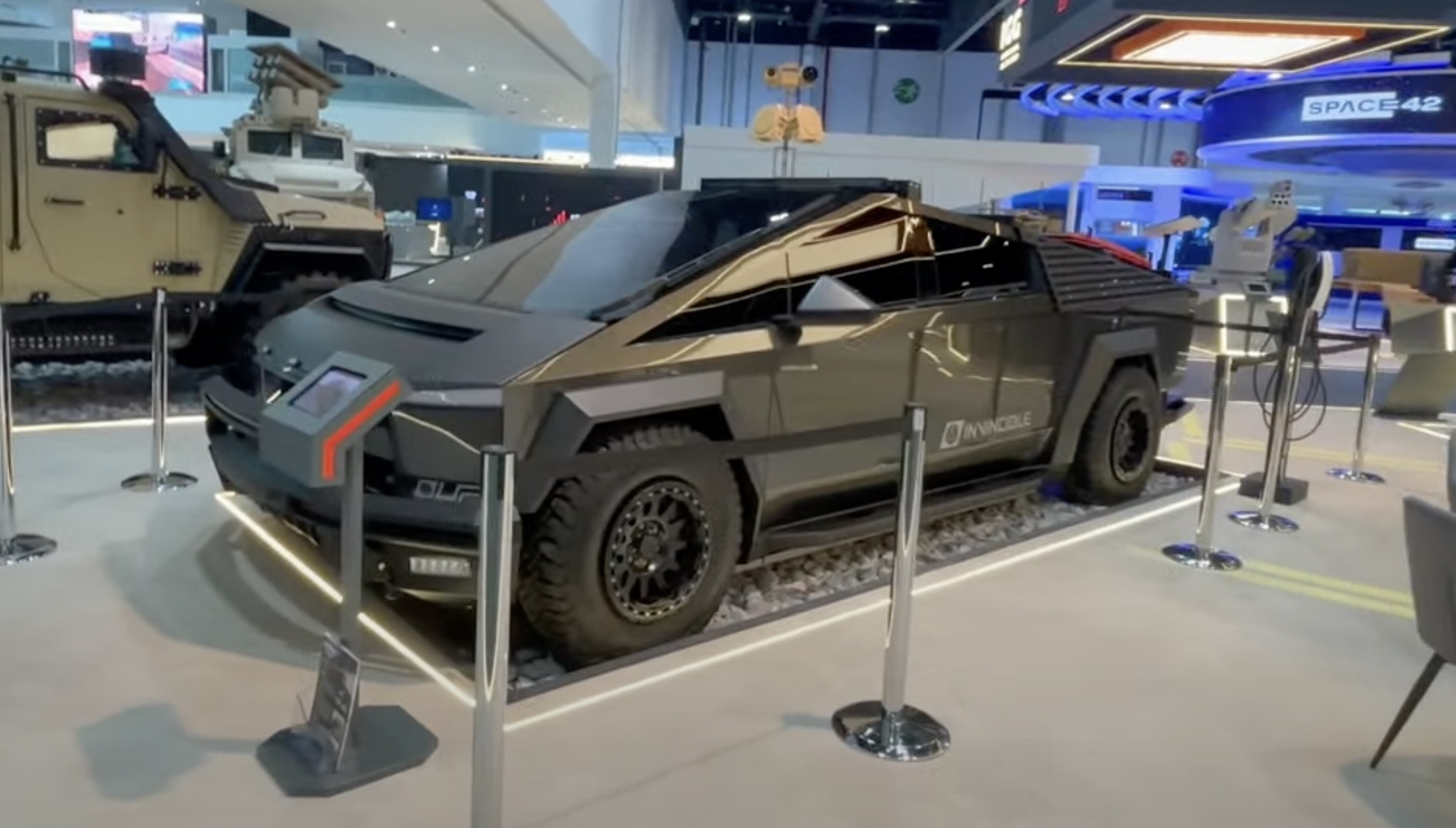
Temporibus autem quibusdam et aut officiis debitis aut rerum necessitatibus saepe eveniet ut et voluptates repudiandae sint et molestiae non recusandae. Itaque earum rerum hic tenetur a sapiente delectus, ut aut reiciendis voluptatibus maiores alias consequatur aut perferendis doloribus asperiores repellat.
Lorem ipsum dolor sit amet, consectetur adipisicing elit, sed do eiusmod tempor incididunt ut labore et dolore magna aliqua. Ut enim ad minim veniam, quis nostrud exercitation ullamco laboris nisi ut aliquip ex ea commodo consequat.
“Duis aute irure dolor in reprehenderit in voluptate velit esse cillum dolore eu fugiat”
Nemo enim ipsam voluptatem quia voluptas sit aspernatur aut odit aut fugit, sed quia consequuntur magni dolores eos qui ratione voluptatem sequi nesciunt.
Et harum quidem rerum facilis est et expedita distinctio. Nam libero tempore, cum soluta nobis est eligendi optio cumque nihil impedit quo minus id quod maxime placeat facere possimus, omnis voluptas assumenda est, omnis dolor repellendus.
Nulla pariatur. Excepteur sint occaecat cupidatat non proident, sunt in culpa qui officia deserunt mollit anim id est laborum.
Sed ut perspiciatis unde omnis iste natus error sit voluptatem accusantium doloremque laudantium, totam rem aperiam, eaque ipsa quae ab illo inventore veritatis et quasi architecto beatae vitae dicta sunt explicabo.
Neque porro quisquam est, qui dolorem ipsum quia dolor sit amet, consectetur, adipisci velit, sed quia non numquam eius modi tempora incidunt ut labore et dolore magnam aliquam quaerat voluptatem. Ut enim ad minima veniam, quis nostrum exercitationem ullam corporis suscipit laboriosam, nisi ut aliquid ex ea commodi consequatur.
At vero eos et accusamus et iusto odio dignissimos ducimus qui blanditiis praesentium voluptatum deleniti atque corrupti quos dolores et quas molestias excepturi sint occaecati cupiditate non provident, similique sunt in culpa qui officia deserunt mollitia animi, id est laborum et dolorum fuga.
Quis autem vel eum iure reprehenderit qui in ea voluptate velit esse quam nihil molestiae consequatur, vel illum qui dolorem eum fugiat quo voluptas nulla pariatur.
News
Tesla Megapacks chosen for 548 MWh energy storage project in Japan
Tesla plans to supply over 100 Megapack units to support a large stationary storage project in Japan, making it one of the country’s largest energy storage facilities.
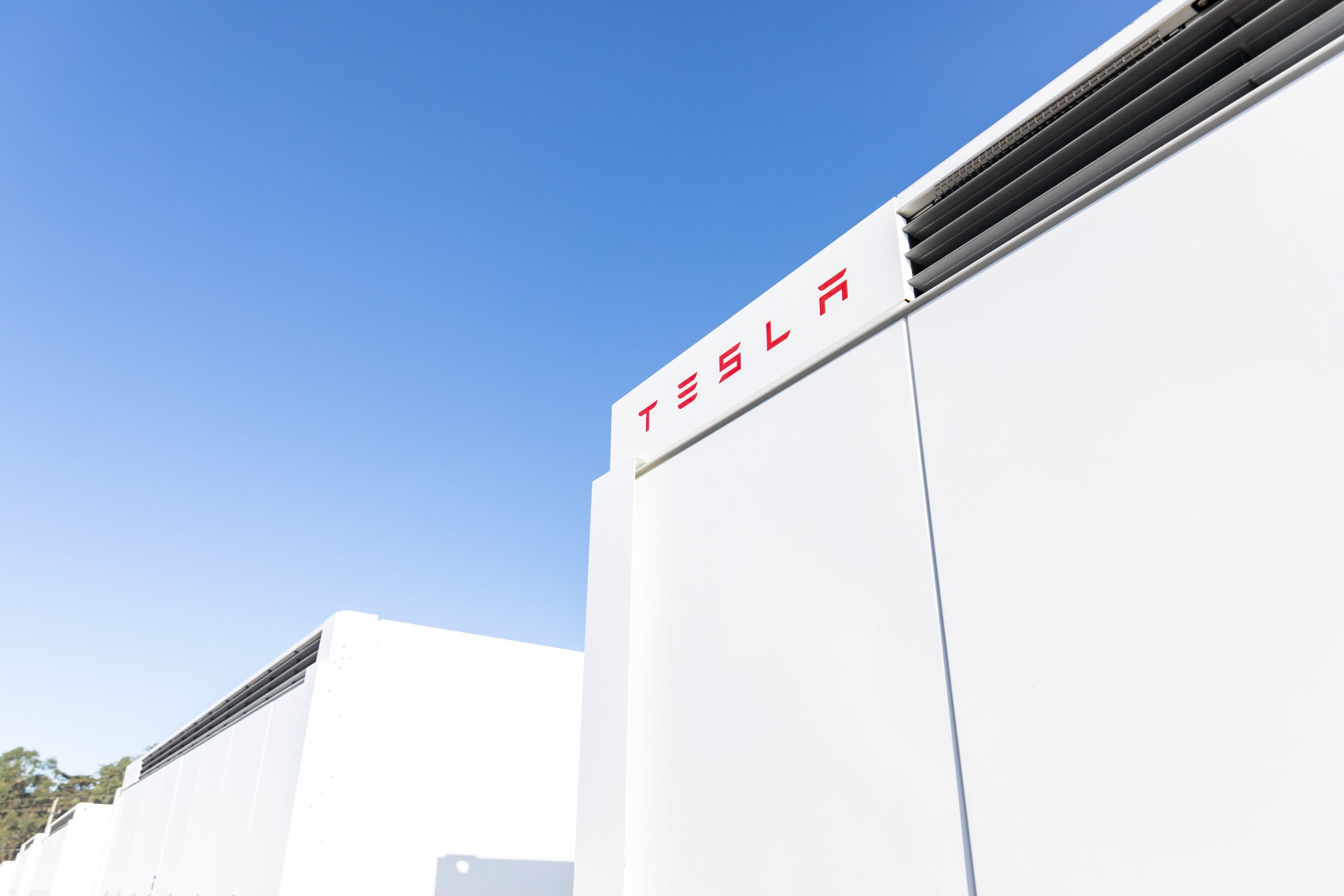
Tesla’s Megapack grid-scale batteries have been selected to back an energy storage project in Japan, coming as the latest of the company’s continued deployment of the hardware.
As detailed in a report from Nikkei this week, Tesla plans to supply 142 Megapack units to support a 548 MWh storage project in Japan, set to become one of the country’s largest energy storage facilities. The project is being overseen by financial firm Orix, and it will be located at a facility Maibara in central Japan’s Shiga prefecture, and it aims to come online in early 2027.
The deal is just the latest of several Megapack deployments over the past few years, as the company continues to ramp production of the units. Tesla currently produces the Megapack at a facility in Lathrop, California, though the company also recently completed construction on its second so-called “Megafactory” in Shanghai China and is expected to begin production in the coming weeks.
READ MORE ON TESLA MEGAPACKS: Tesla Megapacks help power battery supplier Panasonic’s Kyoto test site
Tesla’s production of the Megapack has been ramping up at the Lathrop facility since initially opening in 2022, and both this site and the Shanghai Megafactory are aiming to eventually reach a volume production of 10,000 Megapack units per year. The company surpassed its 10,000th Megapack unit produced at Lathrop in November.
During Tesla’s Q4 earnings call last week, CEO Elon Musk also said that the company is looking to construct a third Megafactory, though he did not disclose where.
Last year, Tesla Energy also had record deployments of its Megapack and Powerwall home batteries with a total of 31.4 GWh of energy products deployed for a 114-percent increase from 2023.
Other recently deployed or announced Megapack projects include a massive 600 MW/1,600 MWh facility in Melbourne, a 75 MW/300 MWh energy storage site in Belgium, and a 228 MW/912 MWh storage project in Chile, along with many others still.
What are your thoughts? Let me know at zach@teslarati.com, find me on X at @zacharyvisconti, or send us tips at tips@teslarati.com.
Tesla highlights the Megapack site replacing Hawaii’s last coal plant
Need accessories for your Tesla? Check out the Teslarati Marketplace:
News
Elon Musk responds to Ontario canceling $100M Starlink deal amid tariff drama
Ontario Premier Doug Ford said, opens new tab on February 3 that he was “ripping up” his province’s CA$100 million agreement with Starlink in response to the U.S. imposing tariffs on Canadian goods.
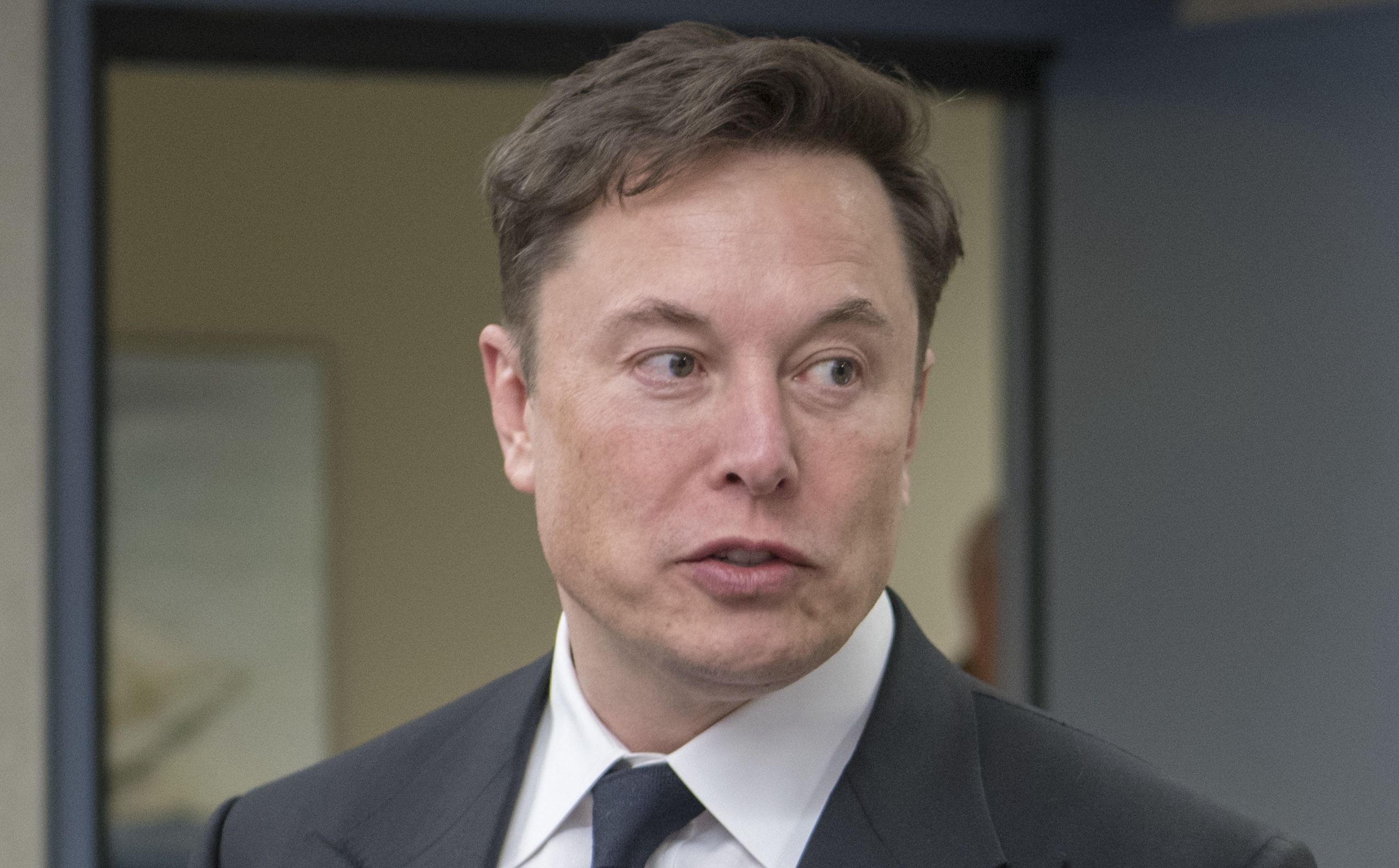
Elon Musk company SpaceX is set to lose a $100 million deal with the Canadian province of Ontario following a response to the Trump administration’s decision to apply 25 percent tariffs to the country.
Starlink, a satellite-based internet service launched by the Musk entity SpaceX, will lose a $100 million deal it had with Ontario, Premier Doug Ford announced today.
Starting today and until U.S. tariffs are removed, Ontario is banning American companies from provincial contracts.
Every year, the Ontario government and its agencies spend $30 billion on procurement, alongside our $200 billion plan to build Ontario. U.S.-based businesses will…
— Doug Ford (@fordnation) February 3, 2025
Ford said on X today that Ontario is banning American companies from provincial contracts:
“We’ll be ripping up the province’s contract with Starlink. Ontario won’t do business with people hellbent on destroying our economy. Canada didn’t start this fight with the U.S., but you better believe we’re ready to win it.”
It is a blow to the citizens of the province more than anything, as the Starlink internet constellation has provided people in rural areas across the globe stable and reliable access for several years.
Musk responded in simple terms, stating, “Oh well.”
Oh well https://t.co/1jpMu55T6s
— Elon Musk (@elonmusk) February 3, 2025
It seems Musk is less than enthused about the fact that Starlink is being eliminated from the province, but it does not seem like all that big of a blow either.
As previously mentioned, this impacts citizens more than Starlink itself, which has established itself as a main player in reliable internet access. Starlink has signed several contracts with various airlines and maritime companies.
It is also expanding to new territories across the globe on an almost daily basis.
With Mexico already working to avoid the tariff situation with the United States, it will be interesting to see if Canada does the same.
The two have shared a pleasant relationship, but President Trump is putting his foot down in terms of what comes across the border, which could impact Americans in the short term.

